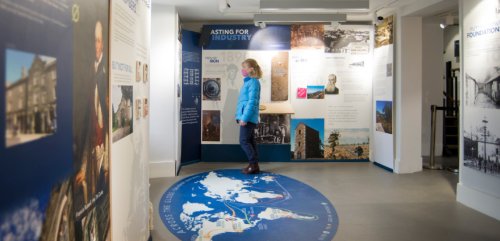Donate to THT
The History of Mining in Tavistock and the Surrounding Area

Devon and Cornwall have a long history of mining and because of this, areas of it have been designated a UNESCO World Heritage site. Tavistock is the Eastern Gateway to this World Heritage Site and it’s the only town in Devon to be included for its role in weighing the tin, copper and arsenic in 1281. The money this brought to the area helped build the town into what it is today. The area was recognised as a World Heritage Site on 13th July 2006, placing it on par with other historically significant landmarks such as Stonehenge or the Great Wall of China.
If you’re looking to explore the mining landscape of Devon and Cornwall, Tavistock is the ideal place to start. In the 19th century the town transformed after the discovery of rich veins of copper and other metals nearly. Because of this, the population of Tavistock almost doubled between 1821 - 1961 due to miners travelling here for work. The Duke of Bedford reinvested back into the town, building new public building and during 1845 – 1866 some 300 cottages were built across the Bedford estate. He also built a 230m reservoir to supply the town with water in 1845. You can see the recognisable ‘Bedford-style’ buildings throughout the town including the Tavistock Guildhall and the Town Hall.
The Devon Great Consols was a copper mine near Tavistock in production in the 19th century and by 1844 a rich vein of copper ore was discovered 20 fathoms underground. In the first 6 years of operation nearly 90,000 tonnes of copper had been retrieved from here and it was so productive that transport by horse and wagon could no longer handle the volume of copper so it was sent to Morewellham Quay. The company built its own railway, the Devon Great Consol Railway. This area was once viewed as the most productive copper mine in the world, and when the company began refining arsenic in 1867, It was considered to be its largest producer in the 19th century. The mine was in use until 1903 when it was abandoned, but during the First World War, the area was active again when arsenic was needed as well as tin and tungsten ore. The area is now part of the World Heritage Site and has been opened to the public since 2009.
Morwellham Quay is a historic river point that was developed to support the local mines, and boasted its own copper mine. It had its peak during the Victorian era and its now run as a tourist attraction and museum, open all-year round. The history of this area is long and fascinating. It was originally set up by the Benedictine monks of Tavistock Abbey to carry goods to and from Plymouth, and by the 12th century, tin ore was transported through the quay, followed by led and silver in the 13th century. When the copper mine here opened in the 18th century, the Tavistock canal was built and opened, linking the town to Morwellham Quay where cargo could be loaded into ships. Interestingly, the canal is still in use today to supply water to a hydro-eclectic power plant at Morwellham Quay.
The substantial remains of this mining landscape are a testimony of the contribution that Cornwall and West Devon made to the industrial revolution in the rest of Britain and the influence this production had on the landscape. It’s deep underground mines, engine houses, foundries, towns, ports and harbour are all a reflection of the time and can still be found today.
You can find out more about our fascinating mining landscape and discover more of Tavistock’s history by visiting the Tavistock Guildhall and Heritage Centre. Make sure to follow us on social media to stay updated with the latest news, events and more!


 Friday 17th October 2025
Friday 17th October 2025

